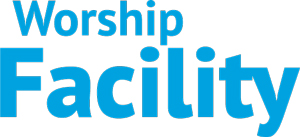If that title caught your attention then you know you’re dealing with this issue currently or you’re about to have this conversion with your leadership. I have been dealing with this issue at a house of worship in my area. Currently the dimmer they have was purchased in 2001 and updated about 8 years ago with some “constant on” units to handle their new LED moving lights, LED strip lights and LED Par Cans. The issue at hand is that the control processor is going, and a major lighting system update isn’t budgeted until 2026. So the options of repair or buying a new unit now have the church deciding if they want to invest any more emergency funds into the dimmer repair and just use the money towards buying new fixtures and installing constant power for them.
With so many new lighting options, some houses of worship aren’t sure whether to invest in dimmers or put that budgeting to my LED DMX fixtures that require constant power. Switching from traditional lighting dimmers to LED fixtures can be a transformative upgrade for your house of worship, but it’s essential to know when the timing is right. The options are endless and opinions are all over the place. So I have laid out some indicators that it might be time to make the transition.

Budget Constraints and Frequent Maintenance
If your utility bills are consistently high, LEDs could be the answer. LEDs consume far less energy than traditional incandescent or halogen lights, allowing significant cost savings over time. Churches with tight budgets will appreciate the long-term cost savings on both energy and maintenance. Incandescent or halogen bulbs have shorter lifespans and require frequent replacements, especially in high-use settings like worship stages. LEDs last 10 to 25 times longer, which means fewer replacements, lower maintenance costs, and less disruption during services.
Flexibility and Temperatures
LEDs offer advanced control options, such as remote color changes and precise dimming capabilities that traditional dimmers can’t achieve. If you’re looking to create a variety of lighting moods for different events or themes, LEDs allow you to customize color temperature, brightness, and even saturation, helping you tailor lighting to the message and atmosphere. Traditional lighting generates substantial heat, which can raise room temperatures and increase air conditioning needs—particularly during summer services. LEDs produce minimal heat, keeping your sanctuary more comfortable and reducing strain on your HVAC system.

Aging Dimmer Systems or Infrastructure Limits
If your church values sustainability, switching to LEDs aligns with eco-friendly practices. LEDs consume less energy and contain no toxic materials, which makes them environmentally friendly and in line with many congregations’ stewardship values.
Older dimmer systems can become difficult and costly to maintain, especially if parts are outdated or replacement options are limited. LEDs don’t require traditional dimming systems, and many LED setups can work with newer, simplified control systems. This shift can reduce infrastructure strain and bring an overall modernization to your lighting setup.

Dynamic Lighting and LED-Compatible Lighting Designs
LED fixtures are more versatile than traditional lighting. You can use them to create dynamic effects like color changes, fades, and patterns that add dimension to worship settings, seasonal events, or special services. LEDs make it easy to bring visual creativity into the space without additional setup or equipment.As LED technology has become standard, there are now more fixtures designed for LED than for traditional dimmer-based lighting. These fixtures often offer better quality, easier installation, and a broader range of styles to suit the aesthetic of modern worship spaces.
Switching over to LED fixtures can be phased in as budget allows, starting with the most high-traffic areas or those that need the most versatility, like the worship stage. The shift can help modernize the worship experience, cut long-term costs, and align with your worship space’s needs.

